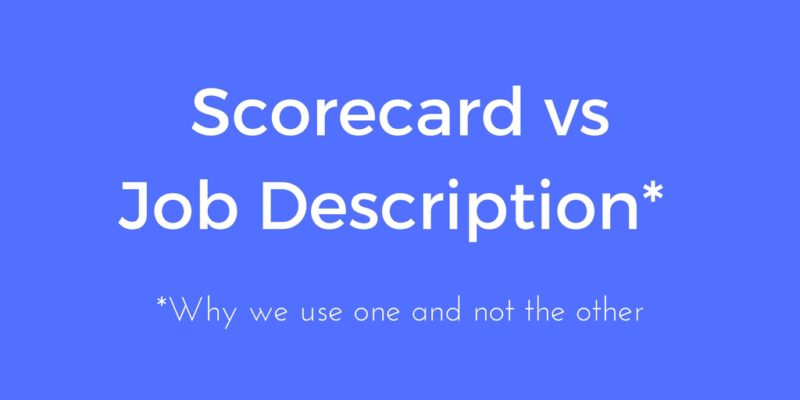Insight: The Upside of a Scorecard over a Job Description
 I’m frequently asked for a sample job description for small group pastors. Generally it is a senior pastor or executive pastor asking for a copy (to use as they enter the hunt to hire a small group pastor).
I’m frequently asked for a sample job description for small group pastors. Generally it is a senior pastor or executive pastor asking for a copy (to use as they enter the hunt to hire a small group pastor).
I tell them, “We don’t use a job description at Canyon Ridge, but I can share my scorecard with you.” And that often sets off a back and forth email chain as I try to explain the scorecard concept (and how it is related to our monthly one-to-one check-ins).
Here’s our method of scorecards and one-to-one monthly check-ins:
A little over 5 years ago we moved from job descriptions to scorecards. We got the idea from Who: The A Method for Hiring by Geoff Smart and Randy Street. It would be a tremendous over-simplification to say it is a very helpful book on hiring the right people.
We got a ton from Who, but one of the most important insights had to do with our current understanding of the upside of a scorecard over a job description.
Three main differences between a scorecard and a typical job description:
First, while a job description typically describes duties and expectations, “Scorecards describe the mission for the position, outcomes that must be accomplished, and competencies that fit both the culture of the company and the role.”
Second, while a job description tends to be static and unchanging, a scorecard is dynamic and changes as outcomes are accomplished.
Finally, while a job description tends to be written by the organization, a scorecard can become a very personal outline of future intentions and actions. A new team member may be handed their first scorecard, but it almost always becomes something written by the employee as a way of saying, “here are my plans for the next 30, 90 or 180 days.”
You can see a copy of my most current scorecard right here (written in December, I’ll be editing it, removing a few items as these have been accomplished and adding a few more items I’ll be working on).
Monthly One-to-One Check-Ins:
The second component of our system is a monthly one-to-one check-in meeting/conversation. The essence of the check-in is a conversation guided by a morphing set of questions. I refer to the questions as “morphing” because they are not exactly the same every month. There are four main categories for the questions (two are directly related to the scorecard and two are personal).
Each of the four categories of questions include several questions, but the main questions directly related to the scorecard are (1) What were your goals since your last Rating* Month? and (2) What projects/tasks will you work on until your next rating* month?
You should be able to see the connection between the scorecard (in most cases developed by the employee) and the monthly one-to-one check-in. The role of the supervisor is able to shift to staff development. The desired employee becomes much more invested in identifying the hills to be taken and the work to be done.
*Rating month refers to our current method of merit pay increases and could be the subject of a future post.
What do you think? Have a question? You can click here to jump into the conversation.


Thank you so much for this Mark. I can’t tell you how timely this is. It’s like I’ve been praying over the concept for months, wrestling with the tension of something I could not name and then today it shows up in my inbox!
Would love to hear more about rating month and merit pay increases.
See you at GroupLife Southwest!
Thanks David! Glad the info is helpful!
mark